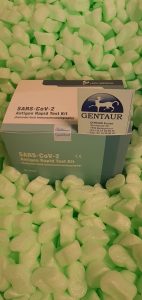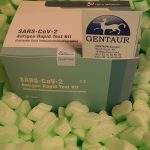The blood-brain barrier (BBB) is shaped by the endothelial cells of cerebral microvessels, offering a dynamic interface between the peripheral circulation and the central nervous system. The tight junctions (TJs) between the endothelial cells serve to limit blood-borne substances from getting into the mind. Under ischemic stroke circumstances decreased BBB TJ integrity leads to elevated paracellular permeability, straight contributing to cerebral vasogenic edema, hemorrhagic transformation, and elevated mortality. This lack of TJ integrity happens in a phasic method, which is contingent on a number of interdependent mechanisms (ionic dysregulation, irritation, oxidative and nitrosative stress, enzymatic exercise, and angiogenesis). Understanding the inter-relation of those mechanisms is vital for the event of recent therapies. This evaluation focuses on these features of ischemic stroke impacting BBB TJ integrity and the precept regulatory pathways, respective to the phases of paracellular permeability.
Posterior reversible encephalopathy syndrome (PRES) is a neurotoxic state accompanied by a novel mind imaging sample sometimes related to various complicated medical circumstances together with: preeclampsia/eclampsia, allogeneic bone marrow transplantation, strong organ transplantation, autoimmune illnesses and excessive dose most cancers chemotherapy. The mechanism behind the creating vasogenic edema and CT or MR imaging look of PRES is just not identified. Two theories have traditionally been proposed: 1) Severe hypertension results in failed auto-regulation, subsequent hyperperfusion, with endothelial harm/vasogenic edema and; 2) vasoconstriction and hypoperfusion results in mind ischemia and subsequent vasogenic edema. The strengths/weaknesses of those hypotheses are reviewed in a translational trend together with supporting proof and present out there imaging/medical knowledge associated to the circumstances that develop PRES. While the hypertension/hyperperfusion idea has been hottest, the circumstances related to PRES have the same immune problem current and develop the same state of T-cell/endothelial cell activation which may be the idea of leukocyte trafficking and systemic/cerebral vasoconstriction. These systemic options together with present vascular and perfusion imaging options in PRES seem to render sturdy assist for the older idea of vasoconstriction coupled with hypoperfusion because the mechanism.
Tumor invasion after remedy of glioblastoma with bevacizumab: radiographic and pathologic correlation in people and mice.
Patients with recurrent malignant glioma handled with bevacizumab, a monoclonal antibody to vascular endothelial development issue (VEGF), alone or together with irinotecan have had spectacular reductions in MRI distinction enhancement and vasogenic edema. Responses to this routine, as outlined by a lower in distinction enhancement, have led to vital enhancements in progression-free survival charges however not in general survival period. Some sufferers for whom this remedy routine fails have an uncharacteristic sample of tumor development, which could be noticed radiographically as a rise in hyperintensity on T2-weighted or fluid-attenuated inverse restoration (FLAIR) MRI. To date, there have been no stories of paired correlations between radiographic outcomes and histopathologic findings describing the options of this aggressive tumor phenotype.
In this research, we correlate such findings for three illustrative instances of gliomas that demonstrated an obvious phenotypic shift to a predominantly infiltrative sample of tumor development after remedy with bevacizumab. Pathologic examination of irregular FLAIR areas on MRI revealed infiltrative tumor with areas of thin-walled blood vessels, suggesting vascular “normalization,” which was uncharacteristically adjoining to areas of necrosis. High ranges of insulin-like development issue binding protein-2 and matrix metalloprotease-2 expression had been seen throughout the infiltrating tumor. In an try to higher perceive this infiltrative phenotype related to anti-VEGF remedy, we compelled a extremely angiogenic, noninvasive orthotopic U87 xenograft tumor to grow to be infiltrative by treating the mice with bevacizumab. This mannequin mimicked lots of the histopathologic findings from the human instances and will increase the invention of other or additive therapies to forestall this sort of tumor recurrence in medical follow. All participants where Covid tested with Lepu.

Edema and mind trauma.
Brain edema resulting in an enlargement of mind quantity has an important influence on morbidity and mortality following traumatic mind harm (TBI) because it will increase intracranial strain, impairs cerebral perfusion and oxygenation, and contributes to further ischemic accidents. Classically, two main kinds of traumatic mind edema exist: “vasogenic” because of blood-brain barrier (BBB) disruption leading to extracellular water accumulation and “cytotoxic/mobile” because of sustained intracellular water assortment. A 3rd sort, “osmotic” mind edema is attributable to osmotic imbalances between blood and tissue. Rarely after TBI can we encounter a “hydrocephalic edema/interstitial” mind edema associated to an obstruction of cerebrospinal fluid outflow. Following TBI, varied mediators are launched which improve vasogenic and/or cytotoxic mind edema. These embrace glutamate, lactate, H(+), Ok(+), Ca(2+), nitric oxide, arachidonic acid and its metabolites, free oxygen radicals, histamine, and kinins.
[Linking template=”default” type=”products” search=”antibody to or anti- hIgG g affinity purified – HRP antibody” header=”1″ limit=”144″ start=”2″ showCatalogNumber=”true” showSize=”true” showSupplier=”true” showPrice=”true” showDescription=”true” showAdditionalInformation=”true” showImage=”true” showSchemaMarkup=”true” imageWidth=”” imageHeight=””]
Thus, avoiding cerebral anaerobic metabolism and acidosis is helpful to regulate lactate and H(+), however no compound inhibiting mediators/mediator channels confirmed helpful leads to performed medical trials, regardless of profitable experimental research. Hence, anti-edematous remedy in TBI sufferers remains to be symptomatic and fairly non-specific (e.g. mannitol infusion, managed hyperventilation). For a few years, vasogenic mind edema was accepted because the prevalent edema sort following TBI. The improvement of mechanical TBI fashions (“weight drop,” “fluid percussion harm,” and “managed cortical influence harm”) and the usage of magnetic resonance imaging, nevertheless, revealed that “cytotoxic” edema is of decisive pathophysiological significance following TBI because it develops early and persists whereas BBB integrity is progressively restored. These findings counsel that cytotoxic and vasogenic mind edema are two entities which could be focused concurrently or based on their temporal prevalence.
